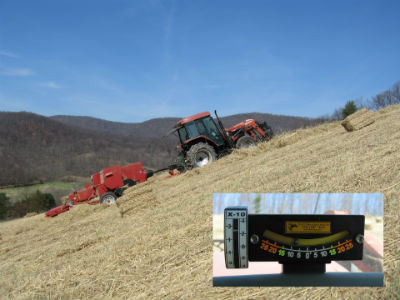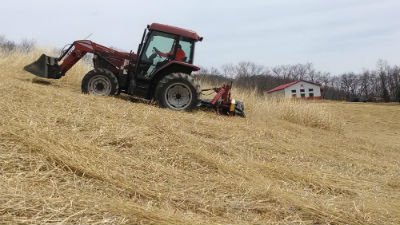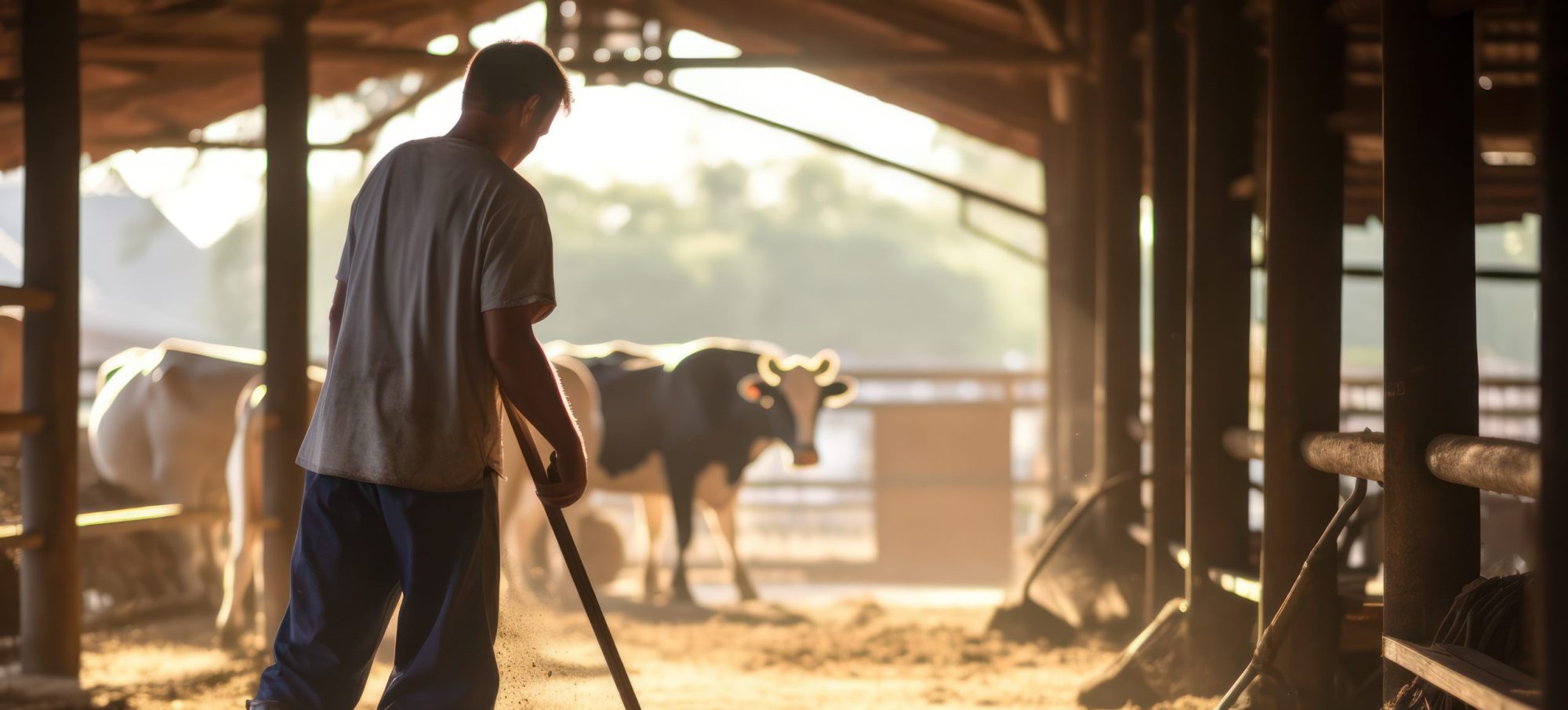It is time to develop ways to minimize safety and health hazards in biomass production on the farm, an area in which there has been little research

Table of Contents
- Abstract
- Research Purpose
- Research Activities
- What We Have Learned
- Why This Is Important
- For More Information
- Contributors to This Summary
Abstract
With increasing numbers of farmers growing biomass for renewable energy uses, new risks of injury and illness materialize. The production, storage, and basic processing of bioenergy crops such as switchgrass, miscanthus, and shrub willow on the farm—especially on marginal land—expose producers to numerous health and safety hazards. Yet there has been very little research into these dangers and how to prevent them in the United States, or in regions such as the European Union, which has long-established biomass industries.
Research Purpose

Nearly half of the country’s renewable energy came from biomass crops in 2011, an increase of 47 percent over the previous decade. With such rapid growth in the biomass industry, early identification and development of safety protocols to prevent and minimize hazards on the farm is important. To determine the current state of injury and illness prevention in this field, Douglas Schaufler, research associate, and Dennis Murphy, professor, both from Penn State University, and their colleagues identified hazards and recommended that protocols be developed to prevent injuries and reduce safety risks.
Research Activities
Schaufler, Murphy, and their colleagues began by combing through related publications in the United States and Europe to find out how much research on safety has been done and how injuries are tracked during biomass field work, harvest, transport, processing, and storage. To identify potential safety risks and other management tools, they used the Haddon Matrix, a framework commonly employed in the public health field to analyze factors affecting injury hazards. They applied the matrix to on-farm biomass production.
One of their colleagues, Charles Schwab, a professor at Iowa State University, is developing a risk-assessment tool that can eventually be used to reduce on-farm hazards in biomass production.
Schaufler and Murphy also looked at existing safety and health regulations and analyzed how they might apply to biomass growers.
What We Have Learned
In biomass production, large equipment is often used to prepare fields and to establish, maintain, and harvest crops. Heavy machinery may also be used to bale the biomass, or chop and chip it in the field, and then move it into storage. Some of this equipment is also used in forage agriculture, but some is unique to a biomass operation—particularly short-rotation woody crops (such as willow), which are grown much like forestry crops.
Schaufler and Murphy determined that the following hazards are likely to exist when producing and transporting biomass crops:
1. Fire, caused by:
- Field stands of dry crops
- Fine, dry dust from harvested crops
- Storage of harvested crops at improper moisture and in large piles or bales
2. Respiratory problems, caused by:
- Fine, dry dust from harvested crops as a result of cutting, baling, and otherwise handling the dry crops
 Willow harvester head showing aggressive cutting edges and feed rolls. Photo: Douglas Schaufler, Penn State.
Willow harvester head showing aggressive cutting edges and feed rolls. Photo: Douglas Schaufler, Penn State. - Molds and fungus in stored biomass
- Fecal matter from rodents or other animals in piles of stored biomass
3. Machinery hazards, which include:
- Harvesting machinery that throws objects
- Aggressive cutting edges and speeds on harvesting equipment
- Slippery ladders or steps
- Large equipment driven on roads or on wet or snowy fields
- Handling large amounts of heavy material
These are by no means the only risks in on-farm biomass production, but they are some of the more prevalent. In addition, growing biomass on marginal land that can’t be used for conventional crops is one important goal of current development efforts. But marginal land can also be steep, wet, rocky, or difficult to reach, and therefore more dangerous.

Schaufler and Murphy also investigated current safety and health regulations. A farm producing biomass might unknowingly fall under Occupational Safety and Health Administration (OSHA) regulations, depending on how much post-harvest processing is done to the crop on the farm. OSHA regards adding value to a crop before sale as processing, and it would therefore fall into a regulated category, unlike growing and storing the crop.
Why This Is Important
As new biomass systems and equipment are designed and put into place, it is imperative that producers anticipate safety hazards and develop protocols that could prevent many injuries and illnesses.
As biomass production for renewable energy increases, larger farm equipment and processes are likely to be used, necessitating new research and effort into reducing safety and health hazards.
For More Information
- Safety and Health: On-Farm Biomass Production and Processing, Journal of Agricultural Safety and Health, In press.
- More resources from NEWBio: Print, Video, and Education Materials
Contributors to This Research Summary
Authors
-
Douglas H. Schaufler, Research Associate, Pennsylvania State University
-
Dennis J. Murphy, Professor, Pennsylvania State University
-
Susan J. Harlow, Freelance Journalist
Peer Reviewer
- Daniel Ciolkosz, Ag Engineering Research Associate, Penn State
 The Northeast Woody/Warm-season Biomass Consortium – NEWBio is supported by Agriculture and Food Research Initiative Competitive Grant no. 2012-68005-19703 from the USDA National Institute of Food and Agriculture.
The Northeast Woody/Warm-season Biomass Consortium – NEWBio is supported by Agriculture and Food Research Initiative Competitive Grant no. 2012-68005-19703 from the USDA National Institute of Food and Agriculture.
Led by Penn State University, NEWBio includes partners from Cornell University, SUNY College of Environmental Science and Forestry, West Virginia University, Delaware State University, Ohio State University, Rutgers University,  USDA’s Eastern Regional Research Center, and DOE’s Oak Ridge National Laboratory and Idaho National Laboratory.
USDA’s Eastern Regional Research Center, and DOE’s Oak Ridge National Laboratory and Idaho National Laboratory.
